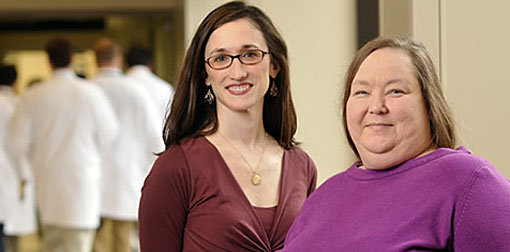Renal Transplantation
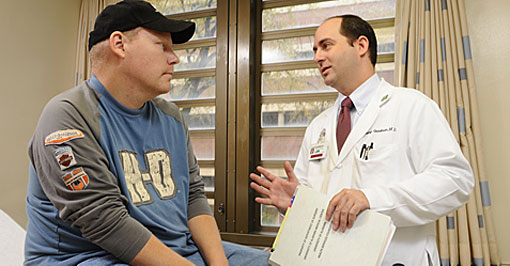
Program Highlights
The kidney transplantation program at the University of Alabama at Birmingham began in 1968, and has been at the forefront of the field ever since. Averaging nearly 300 transplants per year, the program maintains an active clinical and research effort. We provide transplant care to patients from Alabama and throughout the southeastern United States. UAB is the only transplant center within the Alabama Organ Center, which boasts a donation rate of 30 per million-population and a conversion rate of 81%, both of which are much higher than reported national averages.
- We perform up to 100 live kidney donor operations per year. The overwhelming majority of living donations are performed laparoscopically, with donors enjoying a shorter hospital stay, accelerated recovery, and quicker return to work.
- The Mobile outreach clinic allows us to see post-transplant patients from southern Alabama closer to home, reducing the need for these patients to travel to Birmingham for follow-up.
- Our Incompatible Kidney Transplant Program offers desensitization, ABO-incompatible transplants, and paired exchange for living donor pairs who could not otherwise proceed with transplantation.
- The University of Alabama at Birmingham kidney transplant team is actively engaged in the study of new drugs and therapies to improve transplantation outcomes. Studies include both investigator-initiated as well as larger, multi-center trials. Several pivotal trials found their roots at UAB, and the transplant division continues to be at the forefront of basic science and clinical investigation.
Outcomes
As reported by the Scientific Registry of Transplant Recipients, our one-year graft survival of 96% is statistically higher than the expected outcome. After three years, graft survival remains higher than expected. One-year patient survival of 97% and three-year survival of 82% are at the expected level. rate of delayed graft function, defined as need for dialysis in the first week after transplant is 1.2%, compared with 24.2% nationwide.
Patient-Centered Approach
Patients are cared for by a multidisciplinary team that includes surgeons, transplant nephrologists, pre-transplant coordinators, post-transplant coordinators, physician assistants, nurses, pharmacists, social workers, and therapists. From the beginning of the evaluation process, through to the transplant and aftercare beyond, this dedicated team of individuals provides an outstanding level of care to our patients. The evaluation of patients for both kidney donation and transplantation is accomplished in a single day in the outpatient setting, streamlining the process by bringing all members of the team to the patient in one location.

Facilities
Kidney transplants are performed in UABs new, state-of-the-art operating complex. Facilities for advanced laaoroscopy are available for living donor surgeries. A 22 bed surgical intensive care unit is available when needed, although the majority of transplant recipients are initially cared for in our dedicated transplant step-down unit. Located on the main kidney transplant ward, this unit is staffed continuously by a dedicated transplant nursing team. Patients are subsequently cared for on the transplant ward. Following discharge, out-of-town patients stay at the UAB Townhouse, a converted hotel that provides patients with a measure of independence, but also easy and convenient access to transplant aftercare during the early postoperative period. The kidney transplant clinic is located within the main hospital, in close proximity to laboratory and radiology services.
Renal Team
Transplant Nephrologists
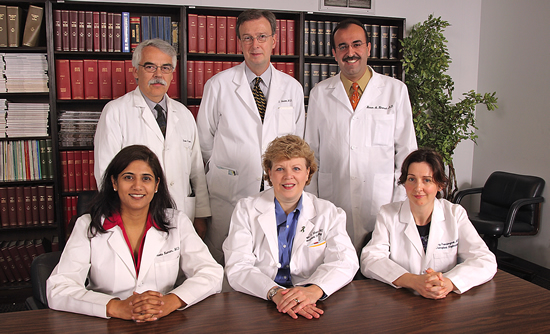
Pre-Transplant Coordinators
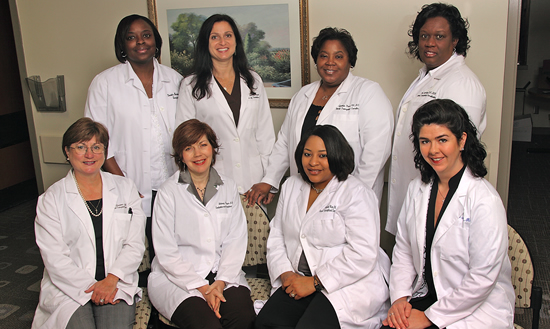
Post-Transplant Coordinators
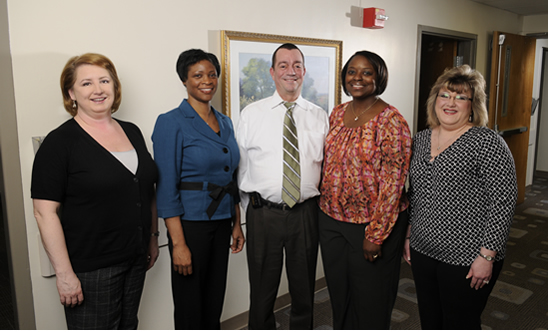
Pediatric Transplantation
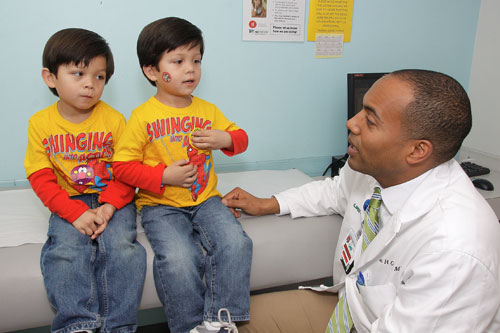
Program Highlights
The pediatric renal transplant program at UAB has been in existence since the inception of the adult transplant program in 1968. The pediatric liver transplant program was initiated in 1993. The pediatric transplant programs average 35 transplants a year with over 500 pediatric renal transplants performed since 1968 and 150 liver transplants since the inception of the pediatric liver program. Our referral base is primarily the southeastern United States. The program is a join effort by the University of Alabama Hospital and the Children's Hospital of Alabama.
Outcomes
The pediatric liver transplant program has 100% survival over the last three years. Renal transplant graft and patient survival is equal or better as reported in the Scientific Registry of Transplant Recipients.
Scientific Registry of Transplant Recipients - kidney (see table 10 for pediatric specific data)
Scientific Registry of Transplant Recipients - liver (see table 10 for pediatric specific data)
Patient-Centered Approach
Patients are evaluated by a multi-disciplinary team including pediatric nephrologists, pediatric renal coordinators, pediatric gastroenterologist specializing in hepatology, pediatric liver coordinators, and other medical pediatric specialist as necessary. Most evaluations are done as outpatients over a 2-3 day period of time at the Children's Hospital Transplant Clinic. If an in-patient evaluation is necessary the patient is admitted to the Nephrology or Gastrointestinal in-patient service at the Children's Hospital. Dedicated specialists in Social Work, Nutrition, Physical Therapy and Child Life are involved with the transplant process starting from the initial evaluation.
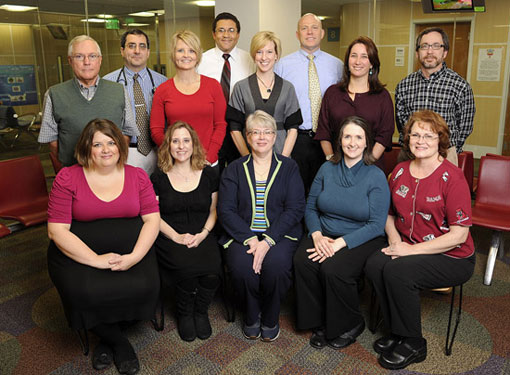
Facilities
The pediatric transplant programs are a joint effort by both the University of Alabama Hospital and the Children's Hospital of Alabama. Currently the transplant procedure is performed at the University Hospital utilizing dedicated anesthesia for the pediatric transplant recipients. The Critical Care team from Children's Hospital provides care in the Intensive care at both the University Hospital and Children's Hospital. Patients are housed on a dedicated floor (7NW) at Children's Hospital for both pre and post transplant care. Hemodialysis, if needed, is provided by the Children's Hospital dialysis unit which has 6 beds for both in and outpatient dialysis. CVVHD and plasmapheresis are available if needed. Transplant Clinic is held once a week at the outpatient clinic in the Children's Hospital. The new Benjamin Russell Children's Hospital to be completed in 2011 will have new dedicated space for the abdominal transplant programs. Housing is available both pre and post transplant at the newly constructed Ronald MacDonald House for patients and their families.
Pediatric Team
 Pediatric Kidney Team
Pediatric Kidney Team
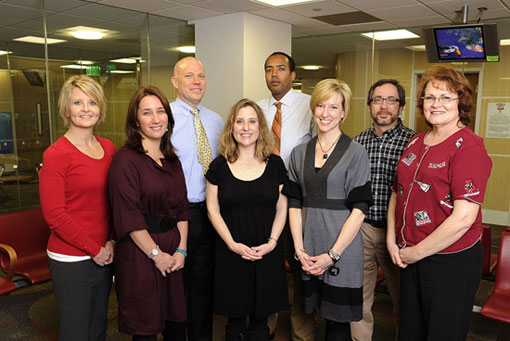 Pediatric Liver Team
Pediatric Liver Team
Pancreas Transplant

Dr. Carlton Young in postop clinic with a pancreas transplant recipient, now insulin free!
Program Highlights
In the past 15 years, over 250 patients have undergone pancreas transplantation at the University of Alabama at Birmingham. We currently offer both simultaneous pancreas-kidney (SPK) and pancreas-after-kidney transplants (PAK). The median time to transplant is 12.5 months for SPK. For patients with living kidney donors, we will often recommend proceeding with kidney transplantation, followed by PAK. We are also in the process of developing a pancreas transplant alone (PTA) program for Type I diabetics with normal kidney function. We provide transplant care to patients from Alabama and throughout the southeastern United States. UAB is the only transplant center within the Alabama Organ Center, which boasts a donation rate of 30 per million-population and a conversion rate of 81%, both of which are much higher than reported national averages.
Outcomes
As reported by the Scientific Registry of Transplant Recipients, our one-year kidney graft survival is 100%, and one-year pancreas graft survival is 89% following SPK. One-year pancreas graft survival following PAK is 85%. One-year patient survival in both cohorts is 100%.
Patient-Centered Approach
Patients are cared for by a multidisciplinary team that includes surgeons, transplant nephrologists, pre-transplant coordinators, post-transplant coordinators, physician assistants, nurses, pharmacists, social workers, and therapists. From the beginning of the evaluation process, through to the transplant and aftercare beyond, this dedicated team of individuals provides an outstanding level of care to our patients. The evaluation of patients for pancreas transplantation is accomplished in a single day in the outpatient setting, streamlining the process by bringing all members of the team to the patient in one location.

Facilities
Pancreas transplants are performed in UAB's, tate-of-the-art operating complex. A 22 bed surgical intensive care unit is available for the initial post-operative care of pancreas recipients. Within 1 to 2 days, patients are transferred to our dedicated post-transplant care unit. Following discharge, out-of-town patients stay at the UAB Townhouse, a converted hotel that provides patients with a measure of independence, but also easy and convenient access to transplant aftercare during the early postoperative period. The pancreas transplant clinic is located within the main hospital, in close proximity to laboratory and radiology services.
Pancreas Team
Pancreas Nephrologists
Pretransplant Team 
Posttransplant Team 
Liver Transplantation

Program Highlights
The liver transplantation program at the University of Alabama at Birmingham began in 1983. UAB is one of twenty programs in the United States that averages at or above 100 liver transplants per year. The program maintains robust clinical and basic science research efforts. Quality transplant care is provided to patients from Alabama and throughout the southeastern United States. UAB is the only transplant center within the Alabama Organ Center, which boasts a donation rate of 30 per million-population and a conversion rate of 81%, both of which are much higher than reported national averages.
Outcomes
As reported by the Scientific Registry of Transplant Recipients (table 10), the UAB liver transplant program's one-year patient survival of 91% is higher than the expected outcome of 86%. The three-year patient survival of 87% at UAB is highly significantly greater than the expected level (p<0.01), and much higher than the US national average of 77.5%. The median time from listing to transplant is only 2.3 months at UAB, compared to a national median of 12.3 months.
Patient-Centered Approach
Due to the wide geographic area served, UAB has a streamlined transplant evaluation process for the convenience of our patients. The UAB hospital and State of Alabama have initiatives to eliminate barriers to transplant access for minorities and economically disadvantaged patients. Patients are cared for by a multidisciplinary team with expertise in liver transplantation that includes surgeons, transplant hepatologists, liver transplant coordinators, physician assistants, nurse practitioners, nurses, pharmacists, social workers, and therapists. There are a wide range of sub-specialty services immediately available including interventional radiology, interventional endoscopy, transplant infectious disease to name a few. From the beginning of the evaluation process through the transplant operation and aftercare beyond, this dedicated team of professionals provides an outstanding level of care.
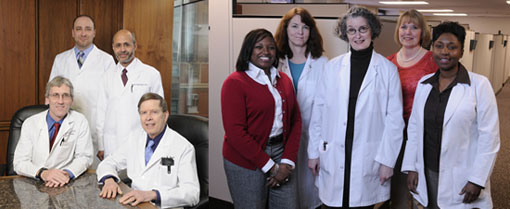
Facilities
Liver transplants are performed in the new, state-of-the-art operating complex at UAB. Patients are initially cared for in the surgical intensive care unit. Liver transplant recipients are then transferred to the dedicated liver transplant ward that is continuously staffed by a dedicated transplant nursing team. Following discharge, out-of-town patients stay at the UAB Townhouse, a converted hotel that provides patients with a measure of independence, but also easy and convenient access to transplant aftercare during the early post-operative period. The liver transplant clinic is located in the Kirkland clinic, in close proximity to laboratory and radiology services.
Liver Team
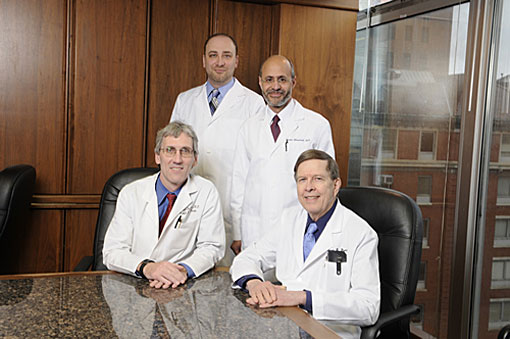
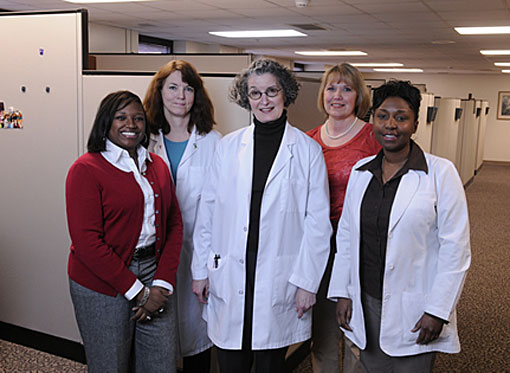
Hepatobiliary Clinic
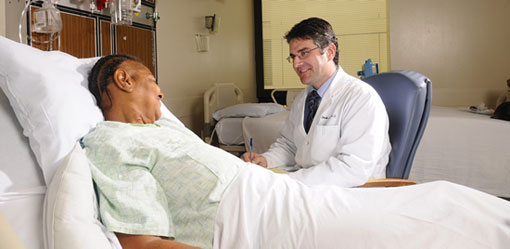 Dr. Derek DuBay with a inpatient recovering from a partial hepatectomy for a 21cm hepatocellular carcinoma.
Dr. Derek DuBay with a inpatient recovering from a partial hepatectomy for a 21cm hepatocellular carcinoma.
Program Highlights
The University of Alabama at Birmingham (UAB) Liver Transplant faculty have busy elective hepatobiliary practices. Over 150 major liver resections or extrahepatic biliary tree procedures are performed annually. The clinic has a large patient volume of hepatocellular carcinoma, cholangiocarcinoma, benign biliary disorders, and focal hepatic lesions in addition to metastatic disease. All patients with malignancies are discussed at an Interdisciplinary Liver Tumor Board consisting of physicians with clinical expertise in hepatobiliary malignancies including hepatobiliary surgeons, hepatologists, medical oncologists, radiation oncologists, interventional radiologists and liver pathologists. The Interdisciplinary Liver Tumor Board functions in a collaborative effort to best diagnose and treat patients with focal hepatic lesions, hepatocellular carcinoma, hepatic colorectal metastases, and cholangiocarcinoma.
Outcomes
A host of tertiary care treatment options are provided including surgical, interventional, chemotherapy, and radiation approaches. In many cases, multiple treatment modalities are utilized in concert to eradicate hepatic malignancies. The advanced surgical approaches include techniques to facilitate aggressive liver resections when close margins or residual liver function is a concern, such as portal vein embolization, sequential liver resection, and vascular resection/ reconstruction. Liver transplantation is also offered for tumors that meet certain requirements. Approximately 30% of the 100+ liver transplants performed annually are for hepatic malignancies. There is expertise in tumor ablation techniques, transarterial chemoembolization (TACE), and Ytrium90 intra-arterial spheres with approximately 100 patients treated with these interventions annually. UAB also offers novel methods of focal liver tumor irradiation. There are several clinical trials for developing chemotherapy regimens, and chemotherapy-radiation combination protocols. In many cases, chemotherapy and radiation protocols are initiated at UAB and continued locally for patient convenience.
Patient Centered Approach
Patients are contacted directly by the hepatobiliary physician extenders and offered a clinic appointment within a week of referral. We strive to provide excellent communication with referring physicians and compassionate patient care. Every patient is presented at the Interdisciplinary Liver Tumor Board. Health care professionals with interest and expertise in hepatic malignancies including surgeons, hepatologists, medical and radiation oncologists, liver pathologists, and diagnostic and interventional radiologists attend this weekly meeting. All radiographic studies and pathological information is reviewed before a comprehensive treatment plan is recommended. The treatment plan will be clearly communicated to both the patient and the referring physician.
Facilities
Outpatient clinics are located in the Kirklin Clinic, in close proximity to laboratory and radiology services. Liver operations are performed in the new, state-of-the-art operating complex at UAB, and interventional radiology procedures are performed in the Heart and Vascular Institute. Patients are initially cared for in the surgical intensive care unit when appropriate and then transferred to a dedicated liver surgery general ward that is staffed by a dedicated transplant and liver surgery nursing team.
Dialysis Access Clinic
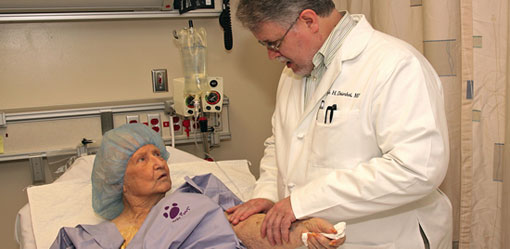 Dr. Mark Dierhoi evaluates a dialysis access patient prior to her planned operation.
Dr. Mark Dierhoi evaluates a dialysis access patient prior to her planned operation.
Program Highlights
The University of Alabama at Birmingham (UAB) Kidney-Pancreas Transplant faculty have busy elective dialysis access practices. Almost 1,000 operative cases are performed each year. A strong emphasis is placed on "Fistula First," and in coordination with referring nephrologists, patients with chronic kidney disease are preferably seen prior to initiating dialysis. Efforts are made to surgically create a native fistula before considering a prosthetic graft. For patients with challenging vascular anatomy, the faculty has considerable experience with advanced vascular access procedures. A close relationship with the Department of Radiology is maintained for both surveillance and rescue of fistulas and grafts.
Placement of catheters for peritoneal dialysis is also offered. Patients with a history of prior abdominal surgery will benefit from our experience with laparoscopic exploration and adhesiolysis. Additionally, pre-sternal peritoneal dialysis catheter placement is available in selected cases.
Patient-Centered Approach
Patients are cared for by a multidisciplinary team that includes surgeons, nephrologists, physician assistants, nurses, and access coordinators. A highlight of the program is the dedicated team of dialysis access coordinators who help arrange for clinic visits, surgeries, and interventional procedures, and maintain a constant line of communication among referring nephrologists, access surgeons, and patients.
Facilities
Dialysis access surgery is performed in UAB's new, state-of-the-art operating complex. Facilities for advanced laparoscopy are available for peritoneal dialysis. Diagnostic radiology services are offered at The Kirklin Clinic, and interventional procedures are performed in the new Heart and Vascular Center at UAB. The dialysis access clinic is located within the main hospital at the Russell Clinic.
Dialysis Access Coordinators
Again, a highlight of the program is the dedicated team of dialysis access coordinators who help arrange for clinic visits, surgeries, and interventional procedures, and maintain a constant line of communication among referring nephrologists, access surgeons, and patients.
